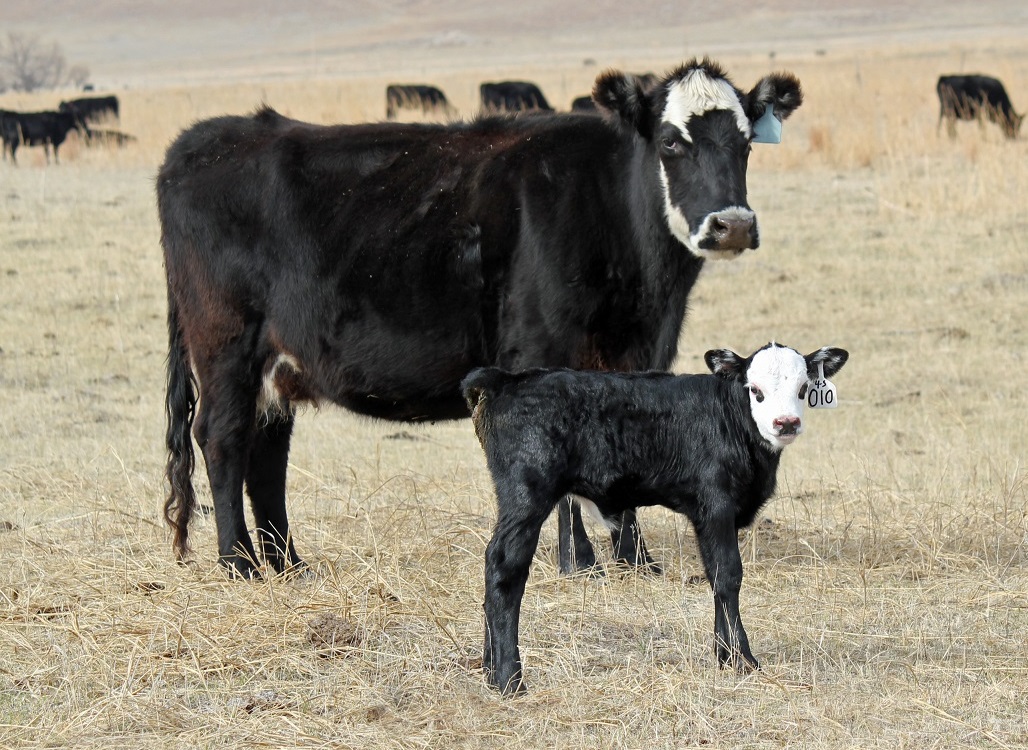
By Aaron Berger, Nebraska Extension Educator
For some calving season is here, while for others, the start of the calving season is still a few months away. The following are practices to consider in preparing for the upcoming calving season.
1. Pay attention to nutrition needs of bred heifers or cows prior to calving. Adequate body condition at the time of calving for young females and mature cows is important as it impacts stamina during delivery of the calf, colostrum quality, calf vigor, and also impacts subsequent rebreeding. Adequate nutrition during the last trimester of pregnancy and especially the last 50-60 days prior to calving is important. Two-year-old heifers and three-year-old cows are vulnerable during this time period. These young females are still growing themselves while growing a calf inside them. As this calf grows and takes up room, rumen capacity is impacted and the amount of feed the young female can eat is reduced. The impact of this condition can be compounded when this time period prior to calving coincides with cold weather and available forage that is low in energy and protein. Body condition can deteriorate rapidly under these conditions.
2. Review with your veterinarian your herd health plan. The whole production system should be discussed identifying critical control points where management could reduce risk and cost effectively improves herd health. Specifically address management options to mitigate health problems that have historically been an issue.
3. Examine calving facilities making sure they are in good working order. Frequently it has been 9-10 months since calving facilities have been used. Inspect gates, pens, alleys and head catches, fixing or replacing broken items. Good lighting is an important part of a calving facility. Check lights and have replacement bulbs on hand.
4. Check your calving supplies. Make sure you have on hand plastic sleeves, obstetrical lube, obstetrical chains or straps, esophageal feeders and calf feeding bottles. Test flashlights or spotlights to make sure they are working as well. Inventory halters, ropes, and other tools that may be needed. Make sure the fetal extractor (calf puller) is clean and working properly.
5. Review the stages of parturition (calving) and understand when assistance is needed. There are several good Extension resources available to producers to help them identify and understand the stages of calving. “Assisting the Beef Cow at Calving Time” by Richard Randle DVM from the University of Nebraska-Lincoln Extension and “Calving and Handling Calving Difficulties” by Robert Mortimer DVM from Colorado State University are two such resources. Review how to correct abnormal presentations and assist the heifer or cow during calving. Know your limitations and when it is time to call your veterinarian.
6. Have colostrum or colostrum replacement products on hand. Richard Randle, DVM from the University of Nebraska-Lincoln reports that approximately 85% of calves dying from infectious disease have received inadequate passive transfer of colostrum. The calf’s ability for absorption of immunoglobulin across the intestine decreases rapidly 6-12 hours after birth. Therefore it is critical that the calf receive colostrum during this time. It is a good practice to immediately milk out a heifer or cow when she is assisted at calving and provide this colostrum to the calf.
If quality or quantity of the colostrum is a concern, other sources of colostrum or colostrum replacement products should be used. Use caution when bringing outside sources of colostrum into the herd. Disease transfer can occur. The best source of colostrum is from within your own herd. Colostrum replacement products can be a good option to utilize when calves are not vigorous at birth, after a prolonged calving event, cold stress or where there is poor maternal bonding. Visit with your veterinarian about which colostrum replacement products are best for your operation.
7. Have a plan and equipment for warming calves if calving during cold weather. Calves born during cold, wet conditions can quickly succumb to hypothermia. Have facilities, tools and supplies on hand to deal with this type of event. For mild hypothermia, (body temperature between 94 and 100°F) giving a calf warm, body temperature colostrum or colostrum replacement products along with drying the calf off with towels and warm air can quickly bring a calf’s temperature back to normal. For extreme hypothermia a combination of warm colostrum with a warm bath can be used. Calves should be dry, alert and have a normal body temperature before being returned to their mother.
8. Plan to provide wind protection along with a clean, dry environment. Wet, muddy conditions are stressful both to cows and calves. This kind of environment also provides a situation where disease proliferation is more likely to occur.
A fresh crop of calves is something cow-calf producers look forward to each year. Having a plan and preparing ahead of time for the calving season can help to minimize calf loss and reduce stress on those caring for the cowherd. For more information on management practices to improve calving success, visit the beef.unl.edu website.
To listen to BeefWatch podcasts go to: https://itunes.apple.com/us/podcast/unl-beefwatch/id964198047 or paste http://feeds.feedburner.com/unlbeefwatch into your podcast app.